








































































































































































































































the page on play with 8 books that inspire kids to touch grass Hands-On Learning in a
what research
uncovered about the importance of analog education

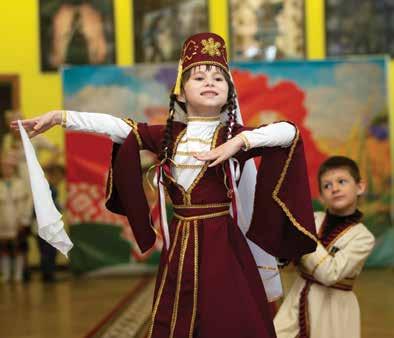




My Cabbage Patch Kid, Millicent Dot. My grandmother got the last one on the shelf, just in time for Christmas.
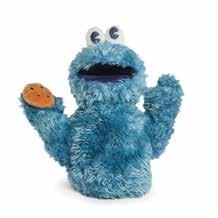
I adored my Cookie Monster puppet from “The Muppet Show”!
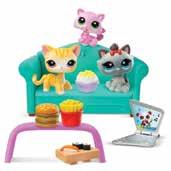
I loved Littlest Pet Shop! It was probably the gateway that led me to the pets I have now.
EDITORIAL
MANAGING EDITOR Allison Sutcliffe
ASSOCIATE EDITOR Kari Hanson
FAMILY FUN EDITOR Meredith Charaba
CALENDAR EDITOR Julie Dodobara
COPY EDITOR Alex Frost
CONTRIBUTORS
Gemma Alexander, Elise Busie, Sandi Schwartz, Krista Tsai
DIGITAL MARKETING
MARKETING DIRECTOR Lindsey Carter
MARKETING DESIGN SPECIALIST Angela Goodwin
MARKETING COMMUNICATIONS SPECIALIST
Devon Hammer
SOCIAL MEDIA SPECIALIST Brooke Collins
ADVERTISING SALES + PARTNERSHIPS
DIRECTOR OF COMMUNITY
PARTNERSHIPS + ADVERTISING SALES Jessica Collet
SENIOR ADVERTISING AND PARTNERSHIPS MANAGER
Ida Wicklund
EVENTS + COMMUNITY
PARTNERSHIPS SPECIALIST
Brenna McCown
ADVERTISING CLIENT SERVICES SPECIALIST
Mallory Dehbod
CLIENT SERVICES
ADMINISTRATIVE ASSISTANT Bronwyn Jones
DIGITAL ADVERTISING + MARKETING SPECIALIST Taryn Weiner
I think I must have wanted to be a hair stylist because when I got a Barbie Doll Styling Head I was thrilled!

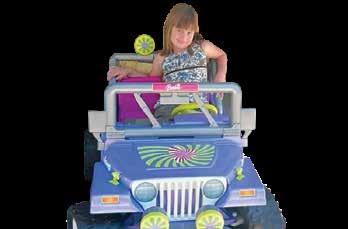
PRODUCTION COORDINATOR Tamryn Nell
ART + PRODUCTION
SENIOR DESIGNER Amy Chinn
ADMINISTRATION BUSINESS MANAGER
Carolyn Brendel
OPERATIONS ASSISTANT Erika Widjaja
Easy Bake Oven! That lightbulb cooking technique would keep any kid busy for hours. — Alayne Sulkin, publisher and Ida Wicklund, senior advertising and partnerships manager
Definitely my Barbie Jeep. I would drive it all over the neighborhood and pick up my friends, one-by-one, to take them to the park.

PUBLISHER
PARENTMAP EDITORIAL ADVISORY BOARD
Benjamin Danielson, M.D. CLINICAL PROFESSOR, UW SCHOOL OF MEDICINE PRACTICING PHYSICIAN, UW MEDICINE
Joan Duffell RETIRED EXECUTIVE DIRECTOR, COMMITTEE FOR CHILDREN
John Gottman, Ph.D. THE GOTTMAN INSTITUTE PROFESSOR EMERITUS, UNIVERSITY OF WASHINGTON
Laura Kastner, Ph.D. PSYCHIATRY + BEHAVIORAL SCIENCES, UNIVERSITY OF WASHINGTON
Bea Kelleigh VICE PRESIDENT, DOVETAILING, LLC
Yaffa Maritz, M.A. FOUNDER, LISTENING MOTHERS + COMMUNITY OF MINDFUL PARENTING
Daniel J. Siegel, M.D. EXECUTIVE DIRECTOR, MINDSIGHT INSTITUTE
CONTACT
INFORMATION
Advertising information 206-709-9026 or advertising@parentmap.com Fax 206-709-9031
Calendar submissions calendar@parentmap.com
Editorial submissions editor@parentmap.com
Distribution distribution@parentmap.com
Administration 206-709-9026, parentmap.com
Subscriptions subscriptions@parentmap.com
Subscription rate 1 year: $12
ParentMap is published monthly.
PMB #190, 7683 S.E. 27th St., Mercer Island, WA 98040 All rights reserved; reproduction in whole or part without permission is prohibited. © ParentMap 2025 • printed in Oregon

By Gemma Alexander
Everyone knows taking your kids to museums has educational value. But it turns out, cultural experiences such as visiting a museum or an arts performance can actually make people feel better, too. A 2018 study in older adults found a significant decrease in depression among those who participated in cultural experiences. Julietta Skoog, a local parenting coach specializing in early childhood who cofounded Sproutable, the educational resource for parents and caregivers, says that kids stand to benefit just as much as adults from cultural experiences.
Cultural experiences
We usually think of cultural experiences as activities such as going to art museums and performances at the theater. These are excellent examples of cultural experiences, but remember, there are many different kinds of museums — including those designed expressly for children. Culture is about more than just fine arts. Seeing a movie at the cinema, attending a ball game or joining a protest are also examples of cultural engagement. Besides fine arts and civic culture, ethnic experiences are an important part of culture, too.
“Connecting to different aspects of food, and music, and language, and art, and traditions. A cultural experience might be within any one of those,” says Skoog.
Smart and sensitive
The academic benefits of cultural experiences vary with the content and context. A child who visits the Burke Museum may come

home filled with new ideas about natural history, while one who attends a ball game might learn about the mechanics of the game. Attending a Festál event at Seattle Center will mean something different to a child who belongs to the ethnicity being celebrated than to one who is just discovering it. But regardless of the content of their learning, the experience of learning something new gives children a confidence boost — especially kids who might struggle in a more traditional learning environment — and contributes to a growth mindset.
“Growth mindset traits are flexibility and optimism and resilience,” says Skoog.
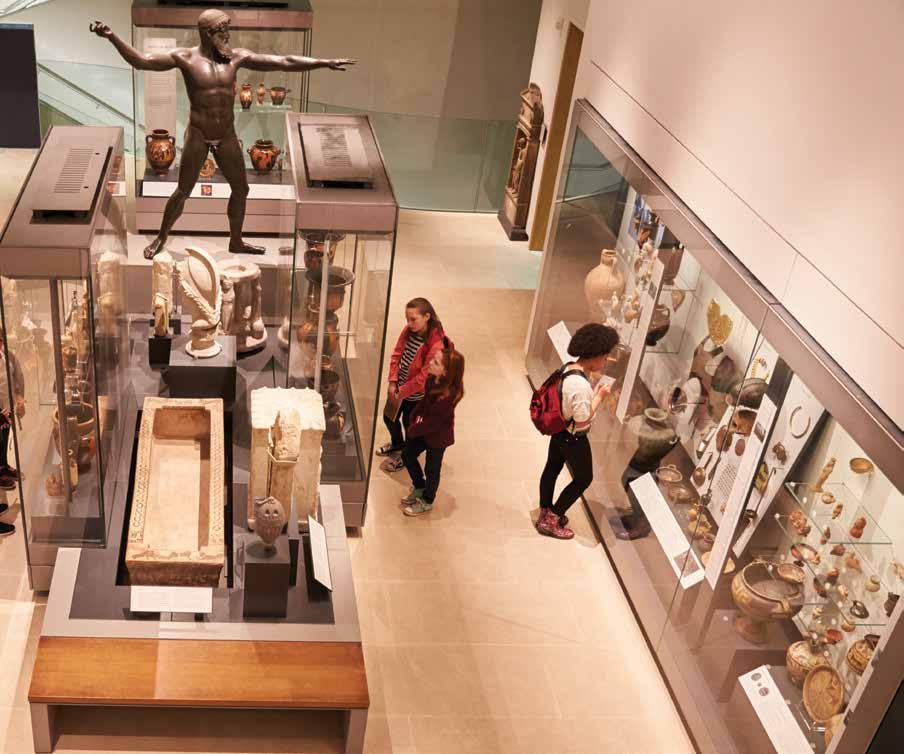
Cultural experiences also provide opportunities for socialemotional learning (SEL), which is even more closely linked to mental health. While any kind of excursion provides opportunities for social development, SEL opportunities are especially strong in the arts, where kids are safely exposed to “a full range of vocabulary of emotion,” says Skoog. “Beyond that, I think about those cultural experiences as a way to be exposed to some healthy tools, like movement, drawing, painting, and sculpture. By having those experiences, it shows a roadmap of things you can do with a feeling. On a personal level, that is my self-care, going by myself and walking through a museum, breathing in art.”
Significance and belonging
“One aspect of psychology that is really critical for not just children but all humans, is this need for significance and belonging. Significance meaning, ‘I matter, I can contribute,’ and belonging meaning, ‘I’m connected to others, ’” explains Skoog. “It is sometimes those special times — we took the bus downtown, and we went to Seattle Center, and we went to the play — that draws out those executive functioning skills. We say the route of encouragement is like the courage to be their best self,” says Skoog.
Seeing parents make the effort to spend time with their children and share that experience makes them feel important and valued.
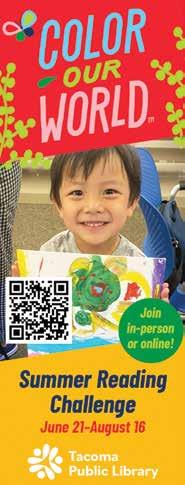







continued from page 7
At the same time, seeing themselves reflected in the wider world in ways that they might not have imagined before also supports a sense of significance and belonging.
“I think the power of art and the experience of art is like, ‘Wow, look at that. Look at what I could do.’ We have to see ourselves in others. There’s that connection, that social wiring that we have in art that expands the mind in that way of [being aware of our] potential. Circling back to ‘I matter, I can contribute, I’m connected to others,’ when we think about young children, that modeling and social reinforcement, there’s a deep encouragement piece there.”
Novelty and ritual
Cultural engagement challenges children with new ideas and experiences and can also provide a sense of ritual.
“It’s that ritual piece that makes them feel safe and keeps them in that prefrontal cortex. It keeps them in that creative realm,” says Skoog. “It’s not just oneand-done, you keep tapping into that part of that spirit.”
Creating a ritual out of cultural experiences isn’t easy when you have so many daily obligations.
“Time goes by so fast. It’s like we’re on a hamster wheel. So, I think that there is real value in being intentional and mindful by looking at the calendar and planning ahead,” says Skoog. She likes to do that with family meetings, where even the youngest family members can have some input into setting priorities. As you plan new adventures, family meetings also give
you a chance to revisit your past experiences and reinforce what you all learned from them.
“There is also some maintenance. I think about the limitations around just being exposed versus integrating it. Are you making time to reflect on what we learned and talk about it, to integrate it into their memories or stories?” says Skoog.
Getting culture right
As you explore different aspects of culture, your family may discover that abstract expressionism is not for you or that crowded street fairs are overwhelming. That’s okay. What matters is how you approach the experience. Try to set a tone of anticipation and excitement instead of fretting about traffic and parking
Instead of picking cultural experiences at random, let them have input and choose activities that relate to their interests.
(my own Achilles heel). If you spend the entire play hissing at your child to stop fidgeting, they are likely to associate special outings with your bad temper instead of looking forward to them.
“If this is supposed to be something that is enriching, well kids learn when they feel connected to you, when they feel that they have some autonomy,” says Skoog. Instead of picking cultural experiences at random, let them have input and choose activities that relate to their interests (those family meetings again). But she adds, “Research shows that effective parenting is connected and firm at the same time. So, it doesn’t mean that you’re just on a total free-for-all. It means that you’ve set up healthy limits, you set up expectations in advance,” says Skoog.
With the right attitude and a little preparation, family members of all ages stand to benefit from the feelings of significance and belonging strengthened by cultural experiences. And if the fringe benefit of having kids who are comfortable and well-behaved in a variety of environments doesn’t actually improve your mental health, it can certainly give you some peace of mind. ■
Seattle-based freelance writer Gemma Alexander focuses on the intersection of parenting and the arts. See more of her work at gemmadeealexander.com.
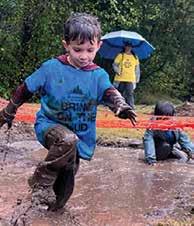
Ages 4-10
Over 20 obstacles, bubbles, games, snacks and more!
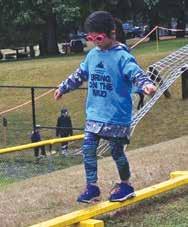

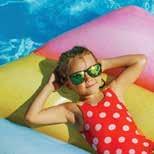


















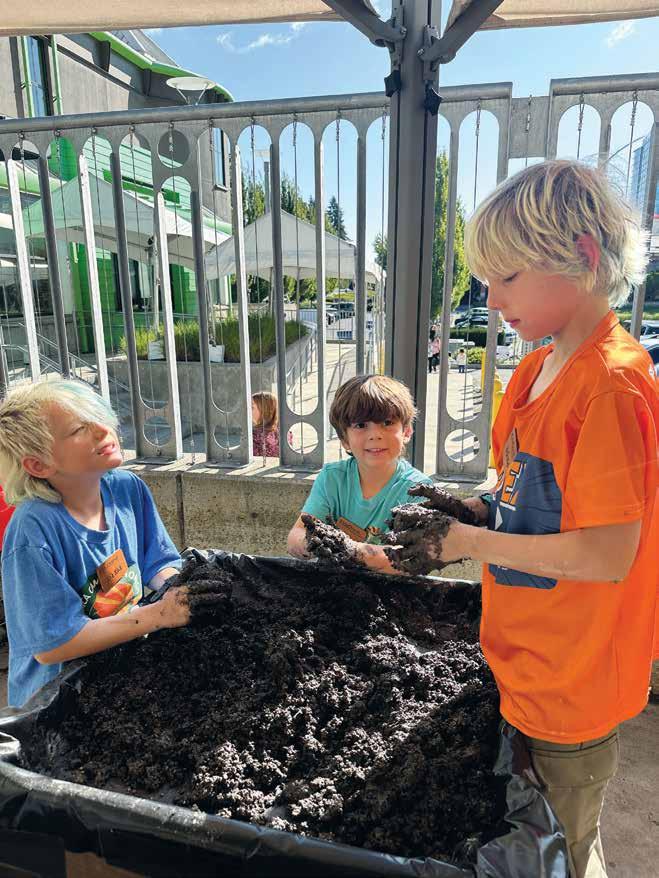


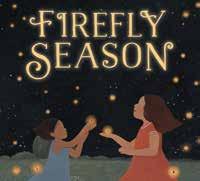

Research consistently shows play is as important for healthy development as academic learning, yet the modern world doesn’t leave a lot of room for play, except perhaps during summer vacation. But the summer slide, in which some kids regress academically while school is out, is real, too. So we’ve found summer reading options to combine the two — a little play, while keeping reading skills sharp in the summer.
“Tori and the Muses” by musician Tori Amos (yes, that Tori Amos) is a picture book about inspiration and creativity in which a young Tori struggles to practice for her recital when she would rather make her own music. Ages 4-8.
“Firefly Season” by Cynthia Leitich Smith (Muskogee) and illustrated by Kate Gardiner (Nipmuck) follows Piper through her playful summer vacations with cousins on the Muscogee and Cherokee Nations as she maintains a friendship with her neighbor Sumi back home in Kansas City. Ages 4-8.


“Kaya Morgan’s Crowning Achievement” by Jill Tew enters the cosplaying world of the Renaissance Faire. Even though her Ren Faire-loving dad has died and the rest of her family doesn’t understand her fascination with the Middle Ages, Kaya is determined to become the first Black Queen of the faire. Ages 8-12.
“A Hero’s Guide to Summer Vacation” by Pablo Cartaya sends a reluctant young Gonzalo Alberto Sánchez García on a book tour with his children’s book author grandfather. Their road trip from Mendocino to Miami turns epic as they slay demons both real and imaginary and Gonzalo learns lessons about family he never read in a book. Ages 8-12.
“The Cave of Time” by Edward Packer launched the predigital books-as-games “Choose Your Own Adventure” phenomenon, and now it’s being rereleased to introduce a new generation to the idea of playing a book. There are 40 possible endings depending how you play. Ages 9-12.
“A Risky Game” by Alyson Gerber is the second book in “The Liars Society” series.
By Gemma Alexander
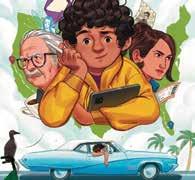

Described as a middle grade mix of “The Inheritance Games” and “One of Us is Lying,” in this book, the game takes a terrifying turn, putting Jack and Weatherby in a precarious situation, racing against time to figure out the game. Ages 9-12.
“Girls with Goals” by Clelia CastroMalaspina tells the story of how women’s soccer took over the world. This nonfiction book explores women’s involvement in the sport from the origin of soccer through bans and challenges to the eventual explosion of women’s soccer into one of the top sports in the world. Ages 11-15.
“Wandering Wild” by Lynette Noni raises the stakes on camping in this young adult survival story about a disgraced actor and his fake fan who embark on a four-day reality TV wilderness adventure and end up stranded in the outback together. Ages 12 and older. ■
Seattle-based freelance writer Gemma Alexander focuses on the intersection of parenting and the arts.
By Elise Buie
My kids — actually, I should say, my kids and I — loved camp, though probably not necessarily for the same reasons. We have all attended sleepaway camp in the Cumberland Mountains of Tennessee, my daughter attended an all-girls camp, and when each of them was old enough to enroll, my three boys attended an all-boys camp a few miles away.
When we started camp, my daughter was around 10 years old, and my son was about 8 years old, which meant my two youngest boys were still too little to be enrolled. Lucky for them, they got to come with me to the girls camp, where I cooked and cleaned up after all the meals in the camp’s dining hall — which, coincidentally, happened to be the most strategic and best place to grab Hershey’s bars for me and the kids to snack on. The following summer, I became the camp office manager.
My youngest, a toddler at the time, especially loved camp because the girls doted on him. Every day, a camper would pick him up from the “fancy” nurse’s cabin where we stayed (fancy because it had running hot and cold water) and bring him to all his activities: horseback riding, swimming in the lake and archery, to name a few. Because he was so young, she would bring him back after each activity so I could check in with him and make sure he went to the bathroom and got snacks. Then, off he would go again!
One afternoon, he received a surprise package from his dad — always an exciting moment — which contained what my now ex must have known would be the perfect gift for a mischievous toddler: a remote-controlled tarantula. As cute as my grinning, lunch-bell-ringing little guy was, he used it mercilessly to scare the girls on the badminton court. I still laugh whenever
I think about it.
Camp remains one of my and my children’s fondest memories from their childhood. A way for kids to become self-reliant and enjoy the outdoors away from screens, summer camp came to mean as much to them as it did to me, especially after I became a divorced parent with limited funds. Here’s why.
Camp relieves the pressure
Camp is a place where a child can go to enjoy some peaceful, uninterrupted time without the pressure of shuffling back and forth to school, sports practices, extracurricular activities, and, in the case of children whose parents are divorced, different houses. When run well with attentive staff who care, camp can quickly become home, not just a home away from home.
For a divorced parent trying to juggle it all, it can also mean a breather. A breather from day-to-day obligations, a breather from the stress of co-parenting, and a chance to breathe in fresh air somewhere serene. Unstructured time in a beautiful setting is simply good for the soul.
Camp teaches independence
The whole point of parenting is to raise independent, free-thinking, kind humans who can function in society. Camp is the perfect foray into that reality. At camp, kids learn to make friends on their own, resolve conflicts and solve problems, from how to light a fire to finding their sneakers.
Adults aren’t so different in this way, and yes, there are grown-ass adults who can’t keep track of their stuff. That wasn’t my issue; however, getting camp (which can be pricey) paid for in those days was. When I discovered I could defray the cost of camp by working there, it was a prophetic mes-

sage that I could stand on my own two feet one day, just by getting creative.
Camp sparks creativity
I don’t know what it is about being in nature, but it sparks creativity in me every time. Opportunities for crafting at summer camp abound, and just the thought of my kids having access to those opportunities was enough inspiration for me to hatch a plan for getting them there. Bonus: I got to go, too.
My kids are adults now, and camp is in the rearview mirror for them until, I imagine, they send their own children. Not so much for me. You see, those memories at camp, even as a mom, left their mark and are probably what led me to buy my forever home with my forever second husband on Puget Sound.
It’s at home, at the veritable summer camp I’ve created for our blended family, where I find my greatest inspiration and joy for parenting adult children with adult wisdom. I can focus on growing my businesses intentionally and coming up with solutions to change outdated ideologies
I don’t believe in. And just as how camp shaped my kids’ childhoods, it shaped me, too — teaching me that independence, resourcefulness and reinvention can turn any chapter of life into a new adventure. ■
Elise Buie is a Seattle-based family law attorney and founder of Elise Buie Family Law Group, a law firm devoted to divorce, family law, and estate planning. Elise knows firsthand what it means to juggle work and parenting, finding balance in between.



Summer2025
Weofferavarietyofprograms withflexibleschedulingtosuitboth seriousandrecreationaldancers,

ThematicCamps:July14th-August1st
DanceandArtCamps forages3.5-8,9:30-12pm ages3.5years-19years.
CircusCampJuly14-18
DrSeussCampJuly21-25
ZooCampJuly28-Aug1

OngoingOpenClasses: ScantheQRCode toregisterforSummer! June16th-August29th
Pre-Ballet,BeginningBallet,Balletfor ages9yrs-12yrs,Balletforages11+
SummerIntensives: July7th-August15th

425-883-3405


BalletTechnique,Pointe/Per-Pointe, MusicalTheatre,Jazz
655156thAveSE,SuiteA355 andContemporary Bellevue98007
www.emeraldballetacademy.com register@emeraldballetacademy.com PhotographybyOlgaDmitrieva


















By Allison Sutcliffe

One of the best things about summer in Puget Sound isn’t the sun’s return. It’s the long, lazy days — rewards at the end of a busy school year for many. But the opposite can also be true. For some parents, long, lazy days — and their lack of structure — can add extra pressure to entertain while juggling work or other responsibilities. However your family approaches summer’s fluidity, I hope this cheat sheet takes the pressure off, freeing you to focus on enjoying family time whenever you can get it.
Don’t waste the wattage with these sunny-day activities that any parent can pull off in an instant.
• Bring your sand toys to Alki or Golden Gardens to build sandcastles.
• Stop and smell the roses at a local botanical garden.
• Bike the Burke-Gilman Trail or Snoqualmie Valley Trail.
• Two words: mini golf
• Look for fanciful creatures along the Maple Valley Gnome Trail.
• Take the ferry to a local island — Whidbey, Bainbridge or Vashon — and spend the day exploring.
Duck inside on a cool or rainy summer day without ducking out of fun with these indoor activity ideas:
• Make it a movie day — watch the latest summer blockbuster at a movie theater or stream a familiar favorite at home.








• Take a spin around a rink — roller or ice. The ice bumper cars at Sprinker Rec Center in Tacoma are a fun twist.
• Play laser tag at Ocean5 or Arena Sports.
• Find nature inside at the Tropical Butterfly House at PacSci, the Conservatory at Volunteer Park or the W.W. Seymour Botanical Conservatory at Wright Park in Tacoma.
• Go on a chocolate tour at Maeve Chocolate in Tukwila or Boehm’s Chocolates and Candies in Issaquah.
Allison Sutcliffe is ParentMap’s managing editor.
A healthy body image — how we think and feel about our bodies — is a key part of overall mental wellness. It’s common for children of any gender to develop bodyimage issues as they approach puberty, and these challenges can sometimes begin even earlier.
As parents and caregivers, we can help our kids appreciate and accept their bodies. Our words and actions are powerful infl uences. What we say and do can encourage kids to treat their bodies with respect, make healthy choices and avoid comparing themselves to others.
There’s a helpful idea called ‘body neutrality’ that we can explore and discuss with our kids. A body-neutral mindset helps us be at peace with our body by appreciating what it does for us. There’s no reason to obsess over our body or resent it — or be a perfectionist about how it looks. The outer ‘container’ that is our body is just a small part of what makes us who we are.
We can also talk about food in a neutral way. Rather than labeling food as good or bad, we can treat it as fuel. For a body to feel good and perform its best, it needs quality food. At home, serve a variety of nourishing foods and avoid being a ‘food cop.’ (Since tweens and teens spend many hours away from home, they’re making lots of their own food choices anyway.) Don’t bug kids about eating more or eating less. Let them tune in to their bodies, feel their own hunger cues, and decide whether to eat or not. When possible, eat together so you can connect as a family. Keep meals fun and relaxed — and screen-free.

Avoid talking about weight, dieting and clothing sizes. If your child says negative things about their body, stop them gently. Help them focus on everything their body can do: run up a hill, carry a heavy load, take them where they need to go. Encourage movement and exercise because it feels good — then support your child as they discover their own favorite ways to move their body.
Limit screen time and especially social media, which tends to focus on physical appearance and can undermine selfconfi dence. Be sure your child is getting quality rest. Simple meditations and breathwork can also help young people feel more relaxed and centered in their bodies. And of course, be a role model: accept and care for your own body in the way it deserves!
If you worry about your child’s mental wellbeing as it relates to body image, eating behaviors or weight-related health issues, talk with their doctor.
SCAN TO VISIT THE MENTAL HEALTH RESOURCE HUB
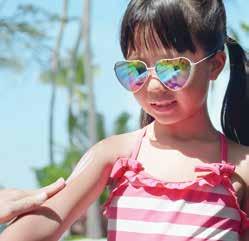
For outdoor summer fun, sunscreen is essential. Childhood sun damage is one of the biggest causes of skin cancer in adults. And people who get severe sunburns in childhood are more likely to later develop malignant melanoma, the most dangerous type of skin cancer.
Choose sunscreen with both UVA and UVB screens with SPF of at least 30. Apply it heavily, using about a golf ball-size amount. Put it on 20 to 30 minutes before going outside, then reapply at least every 2 hours or as the label instructs. Be sure to use water-resistant sunscreen for all water activities.
Seek shady areas or create your own shade with a canopy or umbrella. Try to limit time in the sun between 11 a.m. and 3 p.m., when solar rays are most dangerous. Wear summery long sleeves and pants when possible — and for the best protection, choose tightly woven fabrics that you can’t see through. Enjoy your outdoor summer adventures safely!
Measles has the potential to cause severe illness, and it’s a highly contagious disease. In fact, measles is so contagious that if one person has it, up to 9 out of 10 people nearby will become infected if they are not protected against it through vaccination or previous measles infection. Measles mainly spreads through the air when an infected person coughs or sneezes. And the virus can survive in the air for up to 2 hours after an infected person leaves an area.
Symptoms begin 7 to 21 days after exposure. Measles can cause a rash, fever, cough, runny nose and red, watery eyes. A person with measles is contagious from the period 4 days before a rash appears through 4 days after it appears. A measles rash usually begins as flat red spots on the face at the hairline, then spreads downward on the body.
Measles can also lead to ear infections, diarrhea and pneumonia. And rarely, it can lead to brain inflammation and/or death. Those at highest risk for serious complications from measles include babies and children under age 5, adults over age 20, pregnant people and those with weakened immune systems.
The good news is that the measles vaccine (given in two doses) is highly effective. The measles, mumps and rubella (MMR) vaccine provides about 97% protection against getting infected by measles — and that protection lasts an entire lifetime.
If you have any questions about measles or the measles vaccine, talk with your child’s doctor.
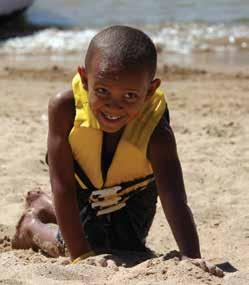
When kids are in or near water, be ready to maximize the fun and minimize the danger! Close and careful adult supervision is crucial — yet this isn’t as simple as it sounds. At the pool or beach, it’s easy to be distracted by your phone or book, or to doze off in the sun. Drowning can happen surprisingly fast and quietly, in little water. And it can happen in crowded settings with lots of adults around, because when a group gathers, everyone’s attention tends to be divided.
Remember to always:
• Explain and enforce water safety rules, including wearing life jackets.
• Swim with others in areas with lifeguards.
• Watch all children and teens in or near water — even if they know how to swim and even when waterplay or swimming is not planned.
• Stay within arm’s reach of young kids and inexperienced swimmers in the water.
• Designate a responsible, full-time ‘water watcher’ when in or around water.
• Abstain from alcohol and other drugs during water-related activities.


Is an animal exhibit or fair part of your family’s summer plans? If so, some simple rules will help ensure it’s a safe visit. Before entering any petting area, be sure hands and faces are clean and don’t smell like food. Once inside, obey the posted rules, don’t eat or drink anything, and don’t touch your face with your hands. Stay very close to your child so you can supervise and pick them up if an animal becomes bothersome. Clean your hands carefully as soon as you exit. Keep in mind that it’s safest for kids under age 5 to avoid touching reptiles, amphibians or poultry, as these animals are more likely to make children sick.
SCAN TO LEARN ABOUT PROPER HANDWASHING
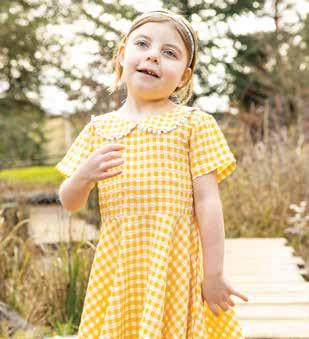
Parents and caregivers may think of using urgent care mainly during late fall and winter, when viruses like colds, flu and RSV are making the rounds. But urgent care is a convenient option at any time of year. It can be an ideal solution during the summer months when kids and teens are enjoying outdoor activities and adventures — and your family is more likely to be away from home.
summer ailments including allergies, minor asthma attacks, heat rashes, sprains and strains, ear pain from swimmer’s ear, scrapes and bumps.
It’s best for children and teens to get urgent care from pediatric experts. Seattle Children’s has four pediatric urgent care clinics — located in Bellevue, Everett, Federal Way and Seattle. Additionally,
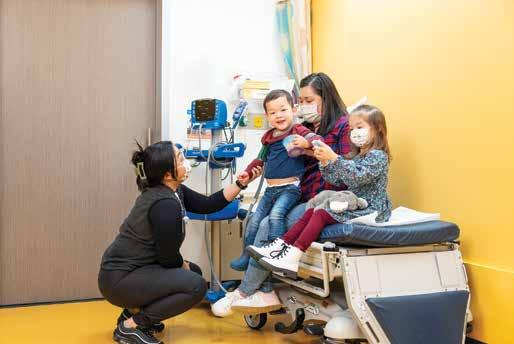
When should you go to urgent care versus other health care options?
Visit your child’s doctor or primary care provider when you need health advice or treatment for common illnesses and minor injuries that don’t require immediate attention. Your primary care provider is also your go-to option for well-child checkups, physicals, prescription refills, vaccinations and screenings.
Call 911 or go to an emergency department if your child has a lifethreatening or serious illness or injury, or if there are signs of a mental or behavioral health emergency.




Go to urgent care when your child has a non-life-threatening illness or injury, and you cannot see their primary care provider due to scheduling or distance. Urgent care is a great option for common
virtual urgent care from Seattle Children’s is available anywhere in Washington state.
Seattle Children’s also has two specialty urgent care clinics. Psychiatric Urgent Care offers in-person and video visits for children ages 4 through 17 who need mental health support and do not need the services of an emergency department. Orthopedic Injury Urgent Care offers in-person visits for children, teens and young adults up to their 21st birthday with urgent orthopedic and sports-related injuries that do not require emergency department services.
SCAN TO LEARN MORE ABOUT SEATTLE CHILDREN’S URGENT CARE OPTIONS
Please check seattlechildrens.org/classes for the latest information. Scholarships are available. If you would like to ask about a scholarship, use the contact information for the class you’re interested in to connect with the registrar.
Autism 101
Watch the free, on-demand lecture, in English or Spanish, at seattlechildrens.org/autism101.
Conversations About Autism
View past sessions at seattlechildrens.org/conversationsaboutautism.
Babysafe
Learn more, view dates and register at seattlechildrens.org/classes.
Finding Mental Health Care in Washington State: A Class on Where to Start
This free, on-demand, self-paced class is available in English and Spanish. Learn more and watch a recording at seattlechildrens.org/classes.
Behavior Basics
Learn more about this free, on-demand, selfpaced class for parents and caregivers of children ages 5 to 12 with disruptive behaviors at seattlechildrens.org/classes.
Youth Mental Health First Aid
Funded by the King County MIDD Behavioral Health Sales Tax, supporting behavioral health and recovery. Learn more, view dates and register at seattlechildrens.org/classes.
Your Child With Disabilities Is Turning 18
Learn more and watch this free class in English, Spanish or Vietnamese at seattlechildrens.org/ classes.
CHILD, PRETEEN AND TEEN CLASSES
Better Babysitters
Choose a virtual or in-person class in Bellevue, Everett, Federal Way or Seattle. Learn more, view dates and register at seattlechildrens.org/ classes.
The Chat Workshop Series (Is Puberty Weird?; Body Basics; More Body Basics; Crushes, Consent, and Other Conversations; Our Sexual Selves)
Choose virtual or in-person in Bellevue or Seattle. Learn more, view dates and register at seattlechildrens.org/classes. See a trailer for The Chat at greatconversations.com.
Sibshops for Siblings of Children With Special Health and Developmental Needs
Learn more, view dates and register at seattlechildrens.org/classes.
Odessa Brown Children’s Clinic at Central District Open House
Saturday, Aug. 9
Learn more at seattlechildrens.org/clinics/ odessa-brown/events.
Free Car-Seat Checks
Seattle: Sept. 20 and Oct. 11
Bellevue: Weekly, on Tuesdays
Federal Way: Second Thursday of every month
Learn how to safely secure your child in the car. Child-passenger safety experts will check your child in a car seat, booster seat or the seat belt and answer any questions you may have. Car-seat checks are by appointment only. Learn more and register for an appointment at seattlechildrens.org/carseatchecks.
Free Virtual Car-Seat Checks
King County Certifi ed Child-Passenger Safety Technicians are off ering free virtual car-seat check appointments via video-chat platforms. For more information, email Laura Miccile at laura.miccile@kingcounty.gov or call 206-477-8664.
South County Fire and Safe Kids Snohomish County off er free virtual car-seat classes. Registration is required. Visit southsnofi re.org/ community-programs/classes/car-seats.

About Good Growing
Heather Cooper is the Editor of Good Growing, which is produced four times a year by the Marketing Communications Department of Seattle Children’s. You can find Good Growing in the January, April, July and October issues of ParentMap and on our website seattlechildrens.org. For permission to reprint articles for noncommercial purposes or to receive Good Growing in an alternate format, call 206-987-5323. The inclusion of any resource or website does not imply endorsement. Your child’s needs are unique. Before you act or rely upon information, please talk with your child’s healthcare provider.
© 2025 Seattle Children’s, Seattle, Wash.
SEATTLE CHILDREN’S HOSPITAL
Regional Clinic Locations
Bellevue
Everett
Federal Way
Olympia Tri-Cities
Wenatchee
Primary Care Clinics
Odessa Brown Children’s Clinic
Richmond Pediatrics
Hospital Numbers
206-987-2000
866-987-2000 (toll-free)
Online Resources
Visit seattlechildrens.org for:
Child health advice
Healthy Tides newsletter
Doctor Finder
The Autism Blog Medical condition information
Health and safety information
Giving to Seattle Children’s Research Institute information





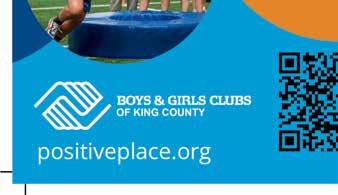










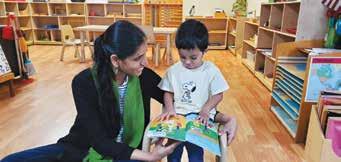
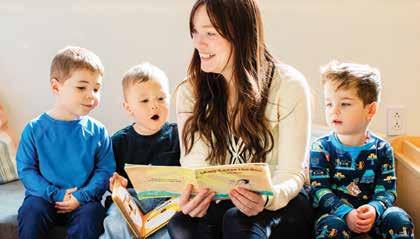
















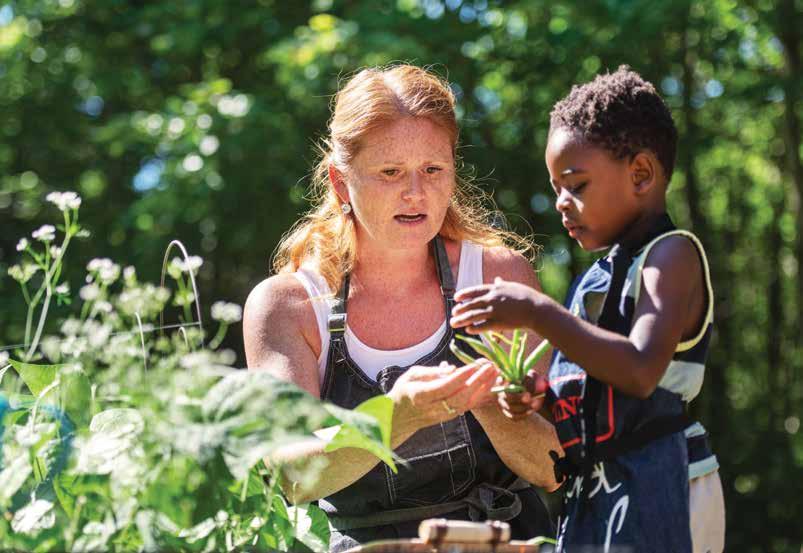
By Sandi Schwartz
Kids have been spending an exorbitant amount of time glued to their electronics, especially in the last year. On average, children ages 8–12 in the United States spend 4–6 hours a day watching or using screens, and teens spend up to 9 hours. Being tied to phones, tablets and computers takes away from hands-on learning time, which is unfortunate since these types of experiences provide so many critical benefits to children as they grow and develop. As media becomes the go-to teaching tool in classrooms, it is imperative
that we find fun and creative ways for kids to experience more hands-on, interactive learning opportunities at home.
First, let’s dive into five key benefits of hands-on educational experiences for children.
Enhances learning
When children are primarily learning by reading, listening and watching, they miss out on a key component of the educational experience that can only

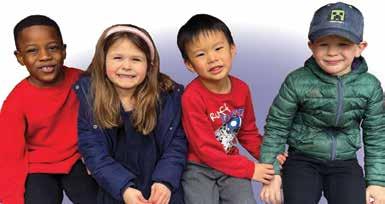














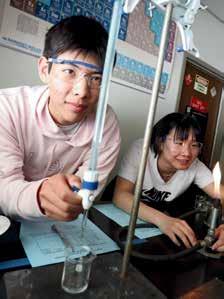


continued from page 21 happen by doing. Kids of all ages thrive when they are provided with interactive, engaging, meaningful educational experiences. According to Brookings Institution, students who are engaged in hands-on learning are much more likely to remember what they were taught.
Interestingly, when children are physically engaged in an activity, they process the information differently and learn more effectively. Simply reading about a concept in a textbook or watching a demonstration in class is just not the same as physically experiencing what you are learning about. A research study from University of Chicago measured this concept using brain scans and found that students who engaged in a hands-on approach to learning scientific concepts were more activated in the sensory and motorrelated parts of their brain. This also led to better quiz scores.
When children are part of something so fascinating that it fills them with awe, like a science experiment or art project, they get excited about it and want to learn more. Hands-on experiences like these can spur curiosity in children, which is so critical to their growth and success. Even though their constant questions may be exhausting for us at times, their curiosity is exactly what we want to see from them so they continue to crave and seek out new knowledge.

Part of the problem with all of this technology is that kids are losing the ability to communicate and interact with others in person. When they hide behind their devices instead of talking face-to-face with their friends and family, they miss out on a major chance for emotional connection. According to Psychology Today, this kind of communication interferes with actual conversation and undermines our ability to connect with others. As children are constantly exposed to these quick impersonal ways of expressing themselves, they miss out on learning how to accurately convey their thoughts and feelings.
When we engage our children in fun hands-on activities, it opens a whole new world to them in which they need to ask questions, explain directions and talk to others about the project. These projects also provide a special bonding time for parents and children or siblings to take on a challenge and work together. Whether it’s baking in the kitchen, working on a garden or conducting a science experiment, kids will learn so many important social skills from the experience. These types of projects are also a great opportunity to invite over some neighbors or friends for a playdate so that the kids can work on a creative project together instead of staring at screens.
It’s one thing to observe art in a museum or watch a building being constructed in a video, but it’s another thing for kids to actually create masterpieces with





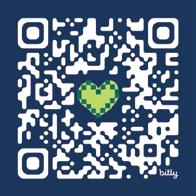

continued from page 23 their own hands. These types of activities allow children to tap into their own creativity and explore as they go. It gives them a direct sensory experience, which offers a more in-depth way of learning about a subject. It also provides a chance to stretch their imagination as much as possible.
When a child has the opportunity to directly work on a project like a science experiment from start to finish, they can feel a sense of accomplishment when they see the results. They then become empowered, which leads to more confidence when they face the next challenge. They also learn from their mistakes and failures, which only makes them more resilient in the future. If the exper-
iment does not come out as planned, they will learn to ask why and make adjustments the next time they work on it. Finally, the encouragement they will get from accomplishing a hands-on project will increase their self-esteem, which will seep into all aspects of their life such as sports, school work and relationships.
There are a number of ways for parents to share hands-on learning experiences with children of all ages.
Science experiments. Working on science experiments is one of the best ways for kids to get excited about STEM in a hands-on manner. By working together on the experiments, your children will have the chance to get creative, follow directions, work with new science tools, challenge themselves to learn something new, and have fun being fascinated by science.
Doing science experiments at home is a great way to demonstrate that science is all around us. A well-designed experiment shows kids that science is fundamentally about understanding the world.
Gardening. Working on a family garden together is another great way for children to engage in hands-on learning. By getting their hands dirty, they learn to appreciate nature, hard work and where the food we eat comes from. Because they play a direct role in growing the fruits and vegetables that they see with their own eyes, touch with their own hands and taste with their own mouths, they are filled with accomplishment and joy.
Arts and crafts. Art projects are one of the easiest ways for children to experience tactile learning. Yes, they can color on an iPad by swiping their finger from side to side, but that does not compare to actually holding a crayon in their hands and using different types of pressure to transfer colors onto the paper. Arts and crafts help stimulate a child’s creativity and imagination, and that can’t be replicated by any electronic program.
Baking and cooking. Inviting the kids into the kitchen to help cook a meal or bake treats can be a wonderful hands-on learning experience for them. Preparing a meal involves choosing a recipe, following directions, tracking time, measuring and even solving simple math equations. Kids also have the chance to touch and feel the different ingredients. Although there are apps for baking cookies and making ice cream sundaes, nothing beats whipping up a delicious treat with your own hands! ■
Sandi Schwartz is a freelance writer and mother of two. She has written extensively about parenting, wellness and environmental issues. Find her work at happysciencemom.com and sandischwartz.com.













By Krista Tsai
When kids have the opportunity to get their hands dirty and learn about gardening, their minds, bodies and communities benefit. Not only does gardening encourage children to try new foods, it also opens their eyes to how food is grown and where it comes from. There is much to learn within the science of gardening, and regardless of age, kids can benefit from outdoor physical activity and gain a sense of responsibility and pride in growing something.
There are various opportunities in the Greater Seattle area to expand children’s gardening knowledge and experience. There are also opportunities for families to give back by practicing their newfound skills. Professionals at teaching gardens, workshops, nursery programs, garden camps and educational farms are passionate about inviting kids into the world of horticulture and improving our communities as a whole.
Kids in the Garden at Bellevue Botanical Garden, Bellevue Preschoolers and their parents can learn more about the creepy, crawly, flying and blooming things in the garden at weekly sessions at Bellevue Botanical Garden. The Kids in the Garden series is a four-week program that’s offered seasonally from spring to fall. Sessions take place indoors and outdoors. Each week focuses on a different theme and includes a story reading, art project, song, snack time and handson learning.
What preschooler wouldn’t be interested in delving into some of the fun themes that include bugs, spiders and birds and water? Space is limited to 12 children per session, and you must register for sessions.
If your child has more energy to burn following a session, feel free to wander the spacious gardens. Some of my family’s favorite spots to visit year-round are the Ravine Experience with a 150-foot suspension bridge, the tiny hobbit-like door built into a stone wall, and stepping inside the “Night Blooming” structure (or the “beehive,” as my kids call it). And don’t forget
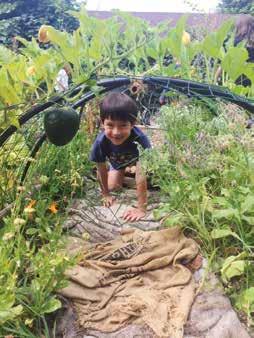

that the Copper Kettle Coffee Bar within the garden serves delicious coffee and other treats.
Recommended ages: Designed for preschoolers ages 3–5 years old with their adult caregiver or parent
Location: 12001 Main St., Bellevue
West Seattle Nursery Growing Gardeners Club, Seattle
If you don’t want to get too dirty but still want to nurture your child’s gardening curiosities, this option might be for you. Children ages 4–12 can join the Growing Gardeners Club for free at the nursery’s Garden Center checkout. Members can stop by once a month for a surprise — learn, explore or participate in an engaging activity.
Recommended ages: 4–12 years old
Location: 5275 California Ave. S.W., Seattle
Infinity Farm’s Learning Garden and Farmer Camps, Issaquah
During the popular Infinity Farm Toddler Tuesdays or during Farmer Camp, children can explore the new Learning Garden at Infinity Farm. Infinity Farm is on a mission to create a hands-on learning experience where kids can learn about growing food and gardening. Andrew Graham of Infinity Farm says they “believe that the simple act of planting a seed can spark a lifelong connection to nature, food, and the joys of gardening.”

Just like all of Infinity Farm, the gardens are child-centered with raised beds at the perfect height, colorful painted rocks to mark rows and borders, and a variety of produce to intrigue children’s curiosities — taste testing is encouraged!
While the Learning Garden will largely provide a self-led exploration opportunity, structured activities (especially during Farmer Camp) may include tasks such as soil amending and composting, seed planting, weed pulling, pruning, harvesting, scavenger hunts and rock painting.
Recommended ages: 3–7 years old (must be potty trained)
Location: 16523 Issaquah-Hobart Rd. S.E., Issaquah
Lake Wilderness Arboretum, Maple Valley While you may not think of this spot as a traditional teaching garden, learning and nature-based play opportunities are plentiful at Lake Wilderness Arboretum, especially throughout the Tribal Life Trail and Children’s Discovery Forest. As you walk along the Tribal Life Trail, you can learn how plants were used by Native people of the Pacific Northwest. The trail is about 270 feet long and is dotted with informa-
tional signage to identify plants and their traditional uses.
Lake Wilderness Arboretum provides a slew of educational self-guided tour options and creative activities. Print some out that appeal to your children for a rich educational experience at your own pace.
My children’s favorite spot to eat a picnic lunch and play here is within the Children’s Discovery Forest. My kids love to claim the empty three-walled shed, stumps and logs as their own, and it sparks their creative play. And what’s more fun than playing checkers at home? Playing a game of checkers on a tree stump in the forest “game room”!
Beyond the educational trails, the Lake Wilderness Arboretum is a gem of a park with two Little Free Libraries (one in the Children’s Discovery Forest and one in the Legacy Garden), a Story Walk, a swimming beach and a great climbing playground with swings and play structures for all ages.
Recommended ages: All Location: 22520 S.E. 248th St., Maple Valley
Oxbow Farm & Conservation Center, Carnation
The Oxbow Kids’ Farm is a 2-acre outdoor classroom that boasts edible plants and carefully planned plots to ensure a rainbow-colored harvest from April through October. It’s free to explore during Oxbow plant stand hours. Climb the tractor, endearingly named “Bub’s.” Pick up an activity or scavenger hunt sheet from the Plant Stand and see what you can check off as you wander the farm. Kids will delight in running through the living tunnels of woven willow branches and red osier dogwood.
Reasonable snacking through foraging is acceptable. Pack a lunch to enjoy at the picnic tables. Explore the eight nature trails that range from 0.1 to 1.2 miles — they’ll take you through various gardens and by peaceful waters. (Note: Strollers with air-filled tires can be used on the trails, although they can be muddy and uneven.)
For a more in-depth experience at Oxbow, schools and groups can book a handson guided field trip. Workshops are also available for those who want to learn more about specific topics. Previous topics have included edible native plants, mushroom cultivation, macroinvertebrates and flower arranging.
As a nonprofit, Oxbow’s mission is to grow native plants and food while maintaining conservation practices. Oxbow provides organic produce and distributes it to our community, ensuring more equal access to fresh foods. For this reason, guests are not allowed to harvest produce from the Kids’ Farm or production fields.
Recommended ages: All (including workshops)
Location: 10819 Carnation-Duvall Rd. N.E., Carnation
Magnuson Children’s Garden, Seattle Within Seattle’s second-largest park, Magnuson Children’s Garden welcomes all families to freely explore the interactive and whimsical oasis created by community volunteers with kids’ input. Families will


JULY 25-27
continued from page 27
delight in discovering the Grey Whale Garden and climbing to sit on top of a life-size whale tail, whirling down the Rolling Hill, wandering around the Salmon Survival Path, spotting insects and birds in the Pollinator Garden, and foraging a fresh snack at the inclusive wheelchair-height raised beds. Accessible crushed rock pathways link all garden entries.
Stop by the kiosk at the Children’s Garden to pick out a Discovery Card to find 10 designated places with nature activities to do at each one. Cards come in 10 different languages. These educational garden and nature activities can be done at the Magnuson Children’s Garden or downloaded to do in your own backyard. The Magnuson Children’s Garden website is full of free resources to expand kids’ knowledge and experience of the outdoor world.

Master gardeners and other local garden experts lead free classes and events throughout the year, providing hands-on learning opportunities. All ages are also welcome to stewardship events, which teach sustainable gardening methods, while also maintaining the Children’s Garden. Kids and adults can learn while contributing to their mission by participating in simple tasks like planting, pruning, weeding, mulching and watering. Make a day of it by playing at the Magnuson Park “Airport” Playground, throw rocks at the beach or fly a kite at Kite Hill.
Recommended ages: All




Location: Warren G. Magnuson Park, 6344 N.E. 74th St., Seattle






Seattle PlayGarden, Seattle
The best way to describe the Seattle PlayGarden is in



their slogan, “A Garden for Everyone.” This 1-acre, fully fenced garden in the city aims to provide an inclusive experience for all children and their families to safely engage in outdoor play and nature discovery. Kids can spread out as they explore the colorful mound playground, giant topiary animals, mud pit, mud kitchen, trails, pollinator gardens, vegetable gardens and more.
Everyone can experience the educational and developmental benefits of getting dirty and being included in the community. A tree house and water table feature are also wheelchair accessible. Say hi to the garden’s chickens and bunnies (but please don’t feed them).
There are inclusive nature-based summer camps, an inclusive outdoor preschool and other programming available. Free play hours have been offered in the past to provide additional opportunities for inclusive play and some structured activities.
Recommended ages: All
Location: 1745 24th Ave. S., Seattle
Tilth Alliance’s Children’s Learning Garden, Seattle
The Tilth Alliance has devoted more than three decades to providing children’s garden education. The Children’s Learning Garden offers school-year camps, after-school programs, family camps and parentchild workshops. Structured activities teach children stewardship through growing food and caring for the land that grows it. Children can learn more about ecosystems, soil, biodiversity, identifying edible plants in the wild, planting, harvesting and cooking.
Field trips for your school, daycare or another group are offered for a hands-on learning experience at the garden and can be catered to pre-kindergarten-aged children through high schoolers. Service learning is geared toward children in third grade and older, and combines learning and hands-on services like gardening and farm work, composting, land and wildlife stewardship, and harvesting and packing food for community programs.
Recommended ages: 2 and older
Location: 4649 Sunnyside Ave. N., Seattle (behind the Good Shepherd Center in Wallingford) ■
Krista is a Seattle-area mom of three. Since having her third child, she has taken a break from Clinical Social Work to stay home. She is determined to teach her children her love of biking, skiing and the beach.

WEDNESDAY, AUGUST 13, 6 – 8 PM
WEDNESDAY, AUGUST 20, 6 – 8 PM









Check out many more happenings online at parentmap.com/calendar
By Julie Dodobara
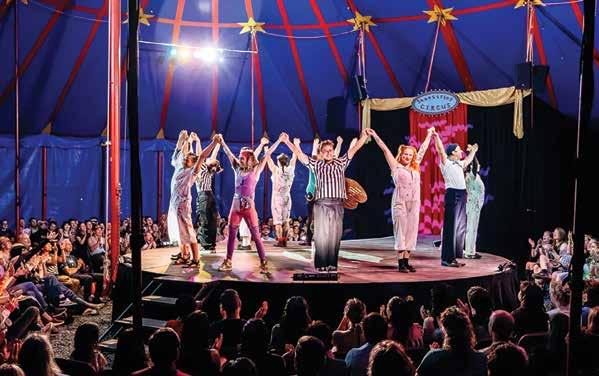
Boasting the best of what summers in the Northwest have to offer — long, warm days and lots of unscheduled free time — July doesn’t disappoint! Since I know you won’t want to waste a minute, I have the goods on fairs, farms, fests, parades, performances and plenty of outdoor play for a memorable summer break in the making.
� Treat the kids to a daytime movie in an air-conditioned theater, always a winner on a hot summer day. It’s a budgetsaver as well thanks to cheap movies from AMC, Regal and Cinemark, happening Monday through Thursday mornings this summer. Book your $1–$3 tickets online at a participating theater.
� The circus is coming to town! Head to the big tent and witness stunning feats of balance, daring acrobatics and comedy by the captivating Shoestring Circus, a Belllingham-based troupe of talented performers. Shows take place Friday–Sunday, June 27–29 and
Thursday–Sunday, July 3–6 in Olympia’s Swantown. Tickets are $34.50 for teens and adults and $17 for kids ages 3–12. Ages 2 and younger are free.
� Have a blast celebrating the Fourth of July with all the spectacle you can handle in nearly every town in the Pacific Northwest. Do your plans include staying up late to witness the skies light up with fireworks? If that’s not compatible with your family’s weeknight bedtime, don’t fret — there are plenty of fun-filled daytime fests as well.
� The Snoqualmie Pass ski area is not just for snow bun-
nies and boarders. During the summer, chairlifts provide a super-scenic ride up the side of the mountain for a memorable family outing. Book your tickets to enjoy as many round-trip rides as you like on the Pacific Crest Chair. Yodeling optional. Weekends through Labor Day; Tickets $23 for teens and adults; $17 youth ages 6–12 years; ages 5 and younger are free.
� Cycling fans, check out Redmond’s Derby Days for a summer festival focused on two-wheelers. In addition to activities including parades, carnival rides, entertainment and a drone show, the heart of this fest is bicycle racing at
July 4 | Friday
Fourth of July Fests
Various locations
the velodrome. Kids also get the chance to try out riding the track. Events take place Friday–Saturday, July 11–12. Free.
� Everyone’s favorite “Steamie” has returned! Catch a ride on a train car pulled by Thomas the Tank Engine, as he comes to life at Snoqualmie’s Northwest Railway Museum during this summer’s Day Out With Thomas: The Party Tour. Meet Sir Topham Hatt and enjoy a bouncy racetrack, live music and photo ops during your time in “Sodor.” Book your tix now for the following dates: July 11–13, 18–20 and 25–27. Tickets cost $32; babies younger than age 1 ride free.
� Discover marine critters who normally live under the cover of seawater at a local beach on extra-low-tide days as you walk, inspect, touch (gently!) and learn more about what you see from trained beach naturalists. Programs take place at beaches up and down shorelines in Seattle, Olympia, Tacoma and Federal Way on select dates throughout the summer starting July 11.
� The King County Fair, a treasured summer tradition, is back! The oldest fair west of the Mississippi boasts oldschool fun like barrel racing, carnival rides, lumberjack shows and rodeo — not to mention the yummy fair food. Find all this fun at the Enumclaw Fairgrounds, Thursday–Sunday, July 17–20; tickets $10–$15, some activities have an additional fee.
July 11–27 | Various dates
Low Tide Beach Exploration with Naturalists
Various locations

� Experience Native food, music, arts and dancing at the annual Seafair Indian Days Powwow which gathers local Native tribes and those from across the continent to celebrate and showcase their varied traditions. Events take place Friday–Sunday, July 18–20 at Daybreak Star Center in Discovery Park. To help support tribal programs, admission is pay what you are able.
� Marvel at next-level creations of a summer staple — the magnificent sandcastle! Head to the scenic Snoqualmie River where McCormick Park hosts Duvall’s SandBlast Festival of the Arts and check out master sand carver creations. You’ll also find music, art and food. Join the free festivities Saturday–Sunday, July 19–20.
� Line the streets of Seattle’s ChinatownInternational District for the annual Seafair Chinatown Parade and catch a glimpse of the 100-foot dragon and
July 18–20 | Friday–Sunday
Seafair Indian Days Powwow Daybreak Star Center
Chinese Community Drill Team among the participating performance groups. It’s a fantastic way to experience the sights and sounds of this vibrant neighborhood. The parade takes place Sunday, July 20.
� Dive into a whole different world of cinema with over 50 imaginative and entertaining feature films and shorts from around the globe, selected by kids. Now a summer affair, this year’s Children’s Film Festival features 2-hour film blocks for a smaller, more accessible experience. The festival runs July 23–27. Various show times. Ticket prices are $15 adults and $5 children.
� An Eastside summer favorite, the award-winning arts and crafts BAM Arts Fair returns and welcomes kids for free handson art projects, games and activities at the youth-oriented portion of the fair. Just-for-kids highlights include a chalk art
station, live performances and ongoing craft stations. The fun takes place Friday–Sunday, July 25–27.
� Get ready for some toetapping fun — it’s a barnyard dance at Auburn’s Mary Olson Farm! Enjoy burgers and line dancing at this historic site where your crew can get a peek at local family farm life of the late 1800s. Learn to rope and meet barnyard friends! Join for free, Saturday, July 26. Preregister.
� For a weekend of international delights, bring the family to MOSAIC, Tacoma’s engaging and inspiring celebration of the area’s cultural diversity. The free fest includes performing and visual arts, crafts and food from cultures around the world, plus activities just for kids. Head to Wright Park Saturday–Sunday, July 26–27. ■
Julie Dodobara is ParentMap’s calendar editor.

July 12
Summer Celebration
Join the city of Mercer Island for Summer Celebration. Community parade, entertainment, food trucks, art vendors, foam party, fireworks and more! mercerisland.gov/ summercelebration

Families making up to $350K never pay more than $16,350 per child or 15% of AGI, whichever is less.
See how affordable it is samisfoundation.org/jewish-day-school-affordability-seattle/